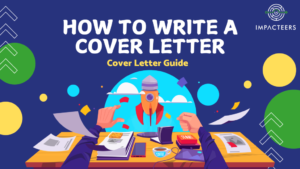Writing a cover letter can be one of the most daunting tasks when applying for a job. One of the most common questions job seekers face is: how long should a cover letter be? While you want to make a strong impression and convey your qualifications, you also don’t want to overwhelm the reader with a lengthy document. Striking the right balance in terms of length is crucial.
In this article, we’ll dive deep into how long your cover letter should be, why length matters, tips for structuring it effectively, and common mistakes to avoid. This comprehensive guide will ensure you create a succinct, compelling cover letter that leaves a positive impact on recruiters and hiring managers.
The Ideal Length for a Cover Letter
The general rule of thumb for cover letter length is between 250 and 400 words, which translates into half a page to one full page when formatted properly. Here’s why:
- Conciseness is key: Recruiters often read through dozens, if not hundreds, of applications. A concise cover letter respects their time while delivering essential information.
- Focus on value: Your cover letter should be targeted and specific. Stick to showcasing your most relevant experiences and qualifications that align with the job description.
- Avoid overwhelming details: A lengthy cover letter can dilute your message, making it harder for the recruiter to quickly grasp why you are the best candidate.
That said, the length of your cover letter may vary slightly depending on the job, industry, and company. However, keeping it within the recommended 250-400 word range ensures you maintain focus and clarity.
Why Does Length Matter in a Cover Letter?

The length of your cover letter matters because it impacts how your message is received by the hiring manager. Here are a few reasons why sticking to the right length is crucial:
1. First Impressions Count
Your cover letter is often the first impression you make on a potential employer. A long-winded letter may come across as disorganized or unfocused, while a short, well-crafted one shows that you can communicate effectively and professionally.
2. Time Constraints of Recruiters
Hiring managers are busy and often have limited time to review each application. If your cover letter is too long, they may skip important sections, or worse, lose interest entirely. A well-structured, concise letter is more likely to be fully read and appreciated.
3. Quality Over Quantity
Many candidates fall into the trap of thinking a longer cover letter equals more impressive qualifications. In reality, recruiters are looking for quality content over sheer quantity. A brief cover letter that highlights the most important details will make a stronger impact than a lengthy one filled with unnecessary information.
4. Attention Span and Readability
In today’s fast-paced world, attention spans are shrinking. A lengthy cover letter can be overwhelming and difficult to digest in one sitting. By keeping it short and to the point, you make it easier for the reader to stay engaged and retain the key points of your message.
How to Structure an Effective Cover Letter
To achieve the right length while conveying all necessary information, it’s important to structure your cover letter effectively. A well-organized cover letter is not only easier to read, but it also ensures that you present your qualifications logically and compellingly. Here’s a breakdown of what each section should contain:
1. Header (Contact Information)
Start with a professional header that includes your contact details and the employer’s information. Make sure the formatting is consistent and easy to read. This section typically includes:
- Your full name
- Your address (optional)
- Your phone number
- Your email address
- The date of submission
- The hiring manager’s name and company details (if available)
The header doesn’t contribute much to your word count, but it’s an essential part of your cover letter’s overall professionalism.
2. Opening Paragraph: Introduction
The opening paragraph is where you capture the reader’s attention and introduce yourself. This should be no more than two to three sentences long. State:
- The specific job you’re applying for
- How you heard about the position
- A brief statement on why you’re excited about the role or company
Example:
“I am writing to express my interest in the Marketing Manager position at XYZ Company, which I discovered through your company’s career page. With over five years of experience in digital marketing and a passion for driving brand growth, I am eager to contribute my skills to your team.”
3. Middle Paragraphs: Body
This is the meat of your cover letter, but it should still be concise and focused. In two to three paragraphs, outline your qualifications, experience, and why you’re the perfect fit for the job. Focus on:
- Your key skills and how they match the job requirements
- Your professional achievements and how they align with the company’s goals
- Specific examples of your past successes that are relevant to the position
- Why you are excited about working for the company
Avoid going into excessive detail about your entire career history — save that for your resume. Instead, focus on one or two significant accomplishments that demonstrate your value.
Example:
“In my previous role as a Digital Marketing Specialist at ABC Corp, I successfully increased website traffic by 35% through a targeted SEO strategy and revamped social media campaigns. My hands-on experience with Google Analytics and data-driven marketing approaches would allow me to make an immediate impact at XYZ Company.”
4. Closing Paragraph: Call to Action
The final paragraph should reaffirm your interest in the role and invite the hiring manager to take the next steps, such as scheduling an interview. Keep this section to around three sentences.
Thank the reader for their time, restate your enthusiasm for the position, and express your availability for an interview or further discussion.
Example:
“I would welcome the opportunity to further discuss how my skills and experience align with the goals of XYZ Company. Thank you for considering my application. I look forward to the possibility of contributing to your team.”
5. Sign-Off
End with a professional closing, such as:
- Sincerely
- Best regards
- Kind regards
Then, include your full name.
Example:
Best regards,
Jane Doe
Common Mistakes to Avoid
Now that you have a clear structure, it’s important to be aware of some common mistakes that can affect the length and quality of your cover letter. Here’s what to avoid:
1. Writing Too Much
While it’s tempting to include every detail of your career, avoid cramming too much information into your cover letter. Stick to the most relevant qualifications and achievements, and remember that brevity is key. A long cover letter can dilute your message and make it harder for the hiring manager to focus on your strongest points.
2. Being Too Vague
On the flip side, don’t be too vague or general. While brevity is important, you still need to provide enough detail to demonstrate your qualifications. Offer specific examples of your achievements and how they relate to the job you’re applying for.
3. Repeating Your Resume
Your cover letter should complement your resume, not repeat it. Instead of rehashing your entire work history, focus on explaining how your past experiences specifically make you a great fit for this particular role. Use the cover letter to provide context or elaborate on a key accomplishment.
4. Not Customizing for Each Job
Sending the same generic cover letter to every employer is a mistake that can hurt your chances. Tailor each cover letter to the job and company you’re applying to. Mention the company by name, refer to the specific job, and align your qualifications with their needs.
5. Ignoring Formatting
Even if your how long should a cover letter be is the perfect length, poor formatting can make it difficult to read. Use standard fonts like Arial or Times New Roman, keep the font size between 10 and 12 points, and maintain one-inch margins. A well-formatted cover letter improves readability and shows attention to detail.
Final Tips for Cover Letter Length and Content
To ensure that your cover letter hits the mark in both length and content, keep these final tips in mind:
- Use bullet points for achievements: If you have multiple key accomplishments, consider listing them as bullet points for clarity and to save space.
- Edit ruthlessly: After writing your cover letter, review it carefully and cut out any unnecessary details. Every sentence should add value.
- Use action verbs: Incorporate strong, active language that demonstrates your role in achieving results. Words like “led,” “managed,” and “implemented” convey authority and competence.
- Keep your tone professional and polite: While you should show enthusiasm for the position, avoid being overly informal or casual.
Conclusion
To sum up, the ideal cover letter length is 250-400 words or half a page to one full page. Sticking to this range allows you to present your most important qualifications without overwhelming the reader. Remember to keep your cover letter concise, focused, and tailored to the job at hand. By crafting a well-structured cover letter, you increase your chances of making a positive impression and landing an interview.

